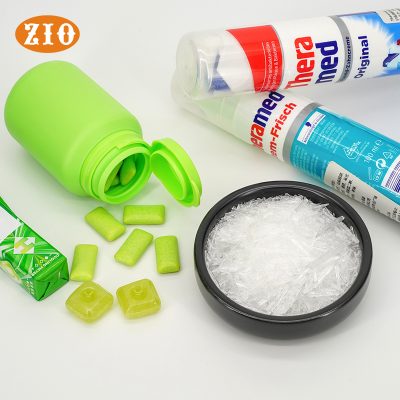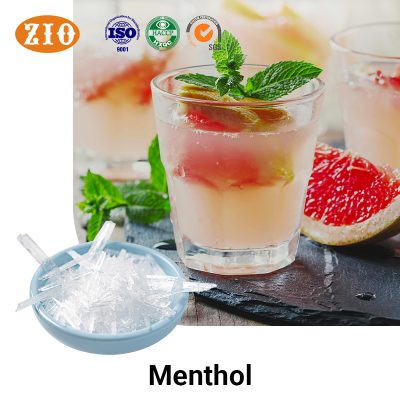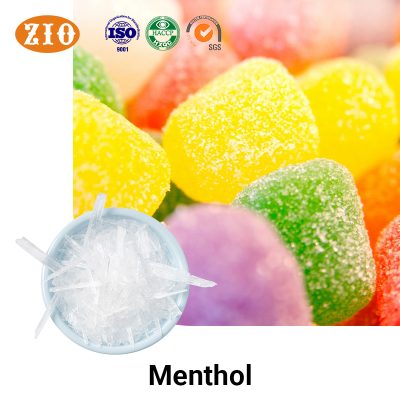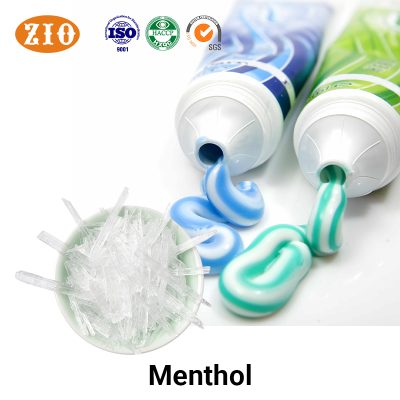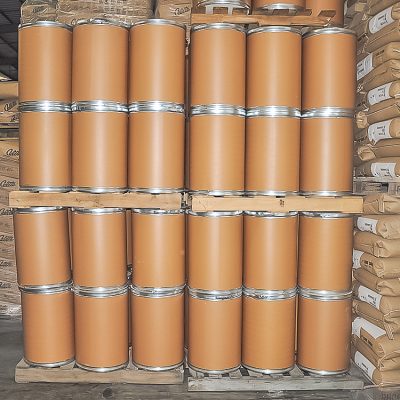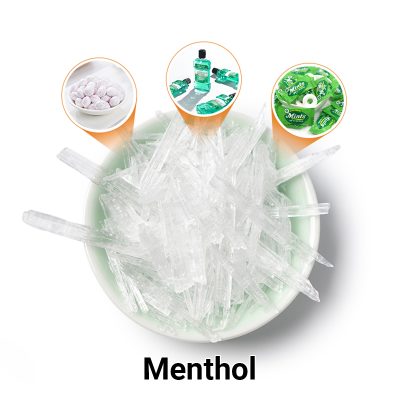What is Menthol?
Menthol is a naturally occurring organic compound primarily found in peppermint oil. It is well known for its cooling sensation, soothing effects, and refreshing minty aroma. Widely used in food, beverages, cosmetics, pharmaceuticals, and personal care products, menthol serves both as a flavoring agent and as a functional ingredient with therapeutic value.
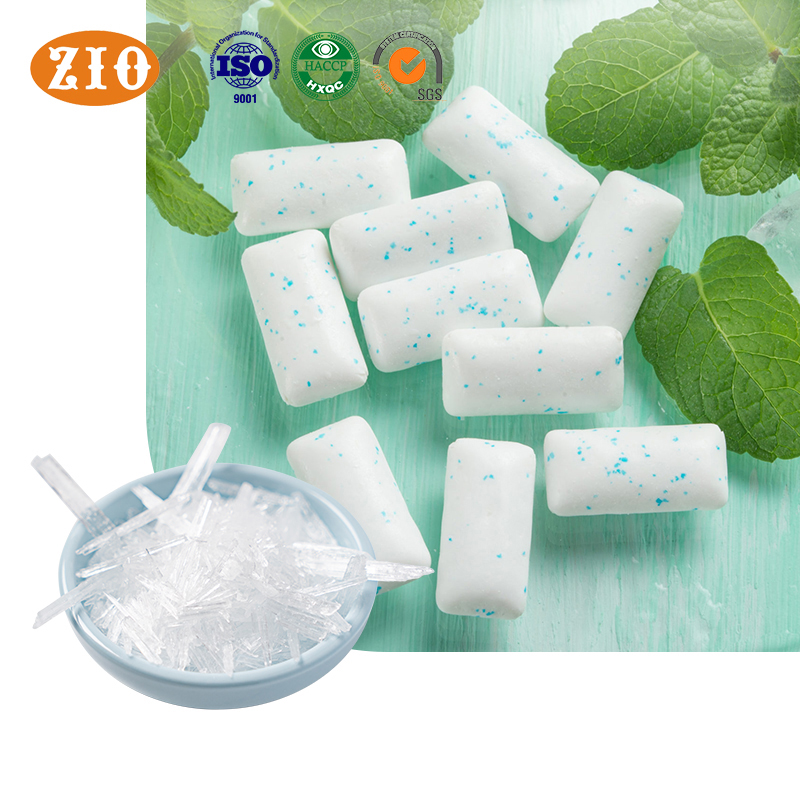
Sources of Menthol
- Natural Sources
Menthol is mainly extracted from peppermint (Mentha piperita) and cornmint (Mentha arvensis). The oil is obtained through distillation, followed by crystallization to separate menthol. India, China, and Brazil are the world’s largest producers of natural menthol. - Synthetic Sources
In addition to natural extraction, menthol can be chemically synthesized. A common route involves hydrogenating para-methylcyclohexanone to produce menthol. Synthetic menthol is widely used in industry and pharmaceuticals for its consistent purity and supply stability.
Physicochemical Properties of Menthol
- Molecular formula: C₁₀H₂₀O
- Molecular weight: 156.27 g/mol
- Appearance: Colorless to white crystalline needles
- Melting point: 42–45 ℃
- Boiling point: 212 ℃
- Solubility: Soluble in alcohol, ether, and oils; slightly soluble in water
- Characteristics: Strong cooling sensation with a minty aroma
These properties make menthol highly suitable for use in flavoring, medicinal formulations, and personal care products.
Key Applications of Menthol
- Food and Beverages
Menthol is commonly added to chewing gum, candies, beverages, dairy products, and baked goods to deliver a refreshing flavor and cooling mouthfeel. - Cosmetics and Personal Care
In toothpaste, mouthwash, shampoo, shower gel, lip balm, and skincare products, menthol enhances freshness, provides a soothing effect, and contributes a pleasant fragrance. - Pharmaceuticals and Nutraceuticals
Menthol has mild local anesthetic and anti-inflammatory effects. It is widely used in cough syrups, lozenges, topical pain relievers, and cold remedies to help relieve sore throats, nasal congestion, and minor pains. - Industrial and Other Uses
Menthol is also applied in tobacco flavoring, fragrance formulation, and the production of certain industrial solvents.
Market Value and Trends
With rising global demand for natural, safe, and refreshing ingredients, the menthol market continues to grow steadily. Natural menthol is especially favored in food, personal care, and pharmaceutical sectors. In the coming years, menthol applications are expected to diversify further, with continuous market expansion.
Safety and Regulations
Menthol is classified as GRAS (Generally Recognized As Safe) when used at recommended levels. It is safe for consumption in small amounts but may cause dizziness, nausea, or stomach discomfort if taken in excessive doses. Regulatory bodies worldwide have established strict dosage limits to ensure consumer safety.
Frequently Asked Questions (FAQ)
Q1: What is the difference between menthol and peppermint oil?
Peppermint oil is an essential oil extracted from mint plants and contains multiple compounds, with menthol being the major active ingredient.
Q2: Can menthol be consumed directly?
Menthol is safe as a food additive in small amounts, but consuming pure menthol directly in large quantities is not recommended.
Q3: What are the benefits of menthol in skincare products?
It provides a cooling effect, relieves skin discomfort, and adds a refreshing fragrance.
Q4: Is menthol natural or synthetic?
Both exist. Natural menthol comes from mint plants, while synthetic menthol is produced chemically.
Q5: Which industries consume the most menthol?
The largest demand comes from food and beverages, cosmetics, personal care, pharmaceuticals, and tobacco industries.
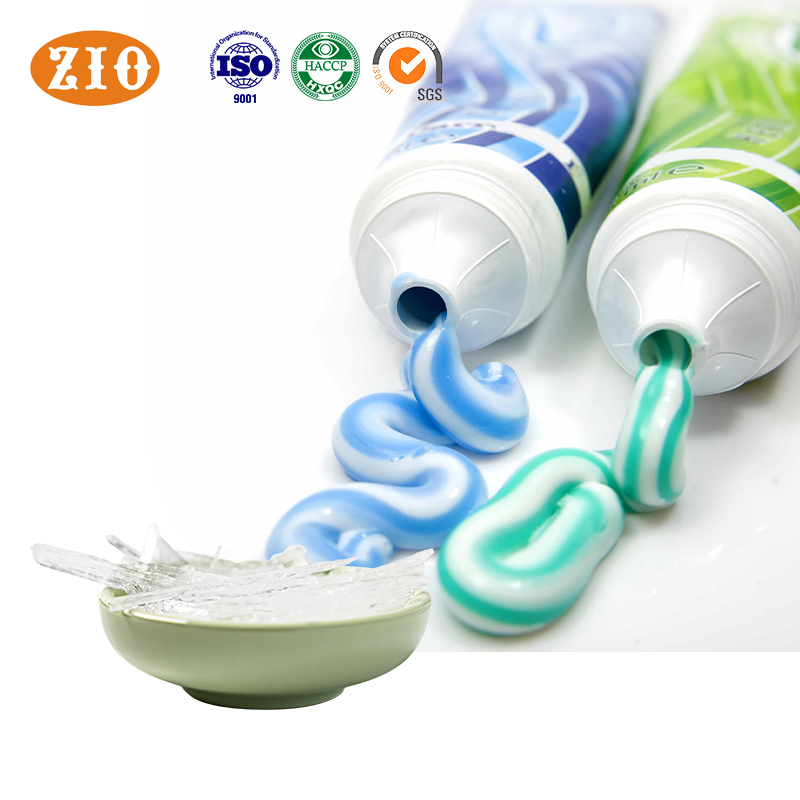


 TOP5 citric acid products sold in china by 2024
TOP5 citric acid products sold in china by 2024
